
Osgood “Oz” Perkins isn’t interested in serial killers.
The writer and director of Neon’s buzzy new horror movie Longlegs says he’s never shared pop culture’s morbid fascination with the psychology of psychopaths, nor was he particularly drawn to the FBI agents who dedicate their careers to catching them. But Perkins knew he could sneak a more personal exploration of family trauma and the lies parents tell their children into a suspenseful crime thriller.
“A lot of what I do and what I think about is about my parents, their lives and their deaths, their presences and their absences,” Perkins tells Inverse.
Longlegs follows Lee Harker (Maika Monroe of It Follows), a psychically gifted FBI agent on the hunt for a Satan-worshipping serial killer behind a series of impossible murders. At each crime scene, a family with a young daughter has been slaughtered. And even though the father typically commits the murders, the FBI attributes the crimes to someone named “Longlegs” (Nicolas Cage) based on a series of letters written in code and left behind at the scene. As Lee closes in on this mysterious culprit, the clues lead her back home to her deeply religious mother Ruth (Alicia Witt). Long-repressed childhood memories emerge, and Lee is forced to question her own connection to the case.
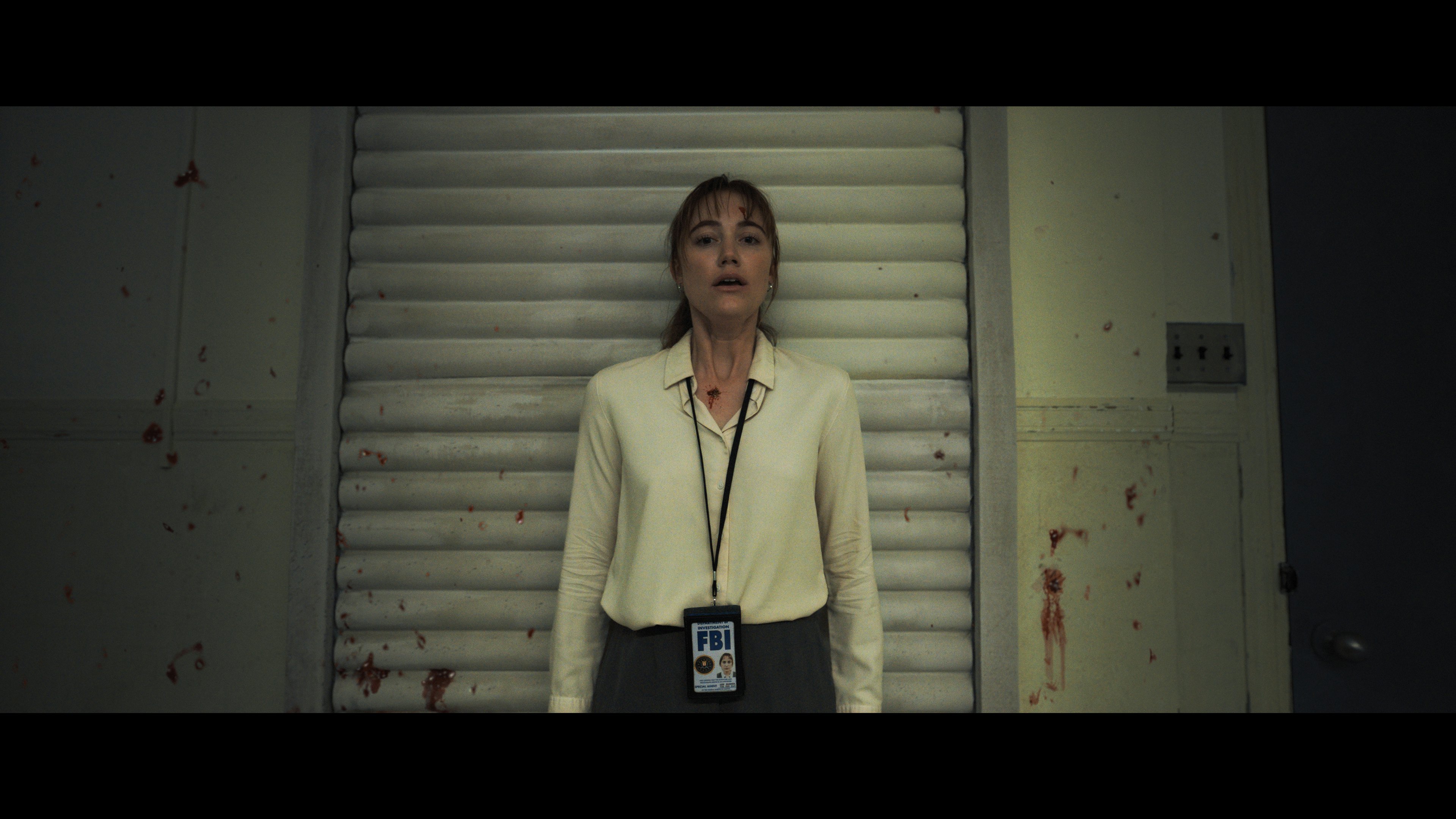
For Perkins, crafting a chilling dissection of familial dynamics within the serial-killer genre was the only way he could have told such a story. The son of original Psycho star Anthony Perkins and fashion model Berry Berenson, who was killed in the 9/11 attacks, Perkins has made no secret of the sustained influence his late parents continue to exert over his life and career. (As an actor, their work has also informed his. Perkins’ film debut was in Psycho II, playing a 12-year-old Norman Bates.)
Since becoming a father himself, he’s only grown more fascinated by the complexity of the relationships between parents and children, the decisions parents make, and the compromises they conceal to protect their children from the truth of their circumstances.
“I have three kids — all very different people, very different ages — and so it's something that I really think about a lot,” Perkins says. “Longlegs, really, at its core, is a parenting movie. It’s a movie that asks the question: ‘Is it right or is it wrong to do this or that as a parent?’”
Be that as it may, Longlegs is also a diabolically unsettling tale of serial killers, Satanic sigils, and demonically possessed dolls. To unpack all that’s happening both on the surface of Perkins’ chilling thriller and the true meaning that lurks within its cold, dark frames, Inverse spoke to the man himself to break down some of the scariest and weirdest moments in what may prove to be 2024’s creepiest film.
Warning: Spoilers ahead for Longlegs.
The terrifying atmosphere of Longlegs
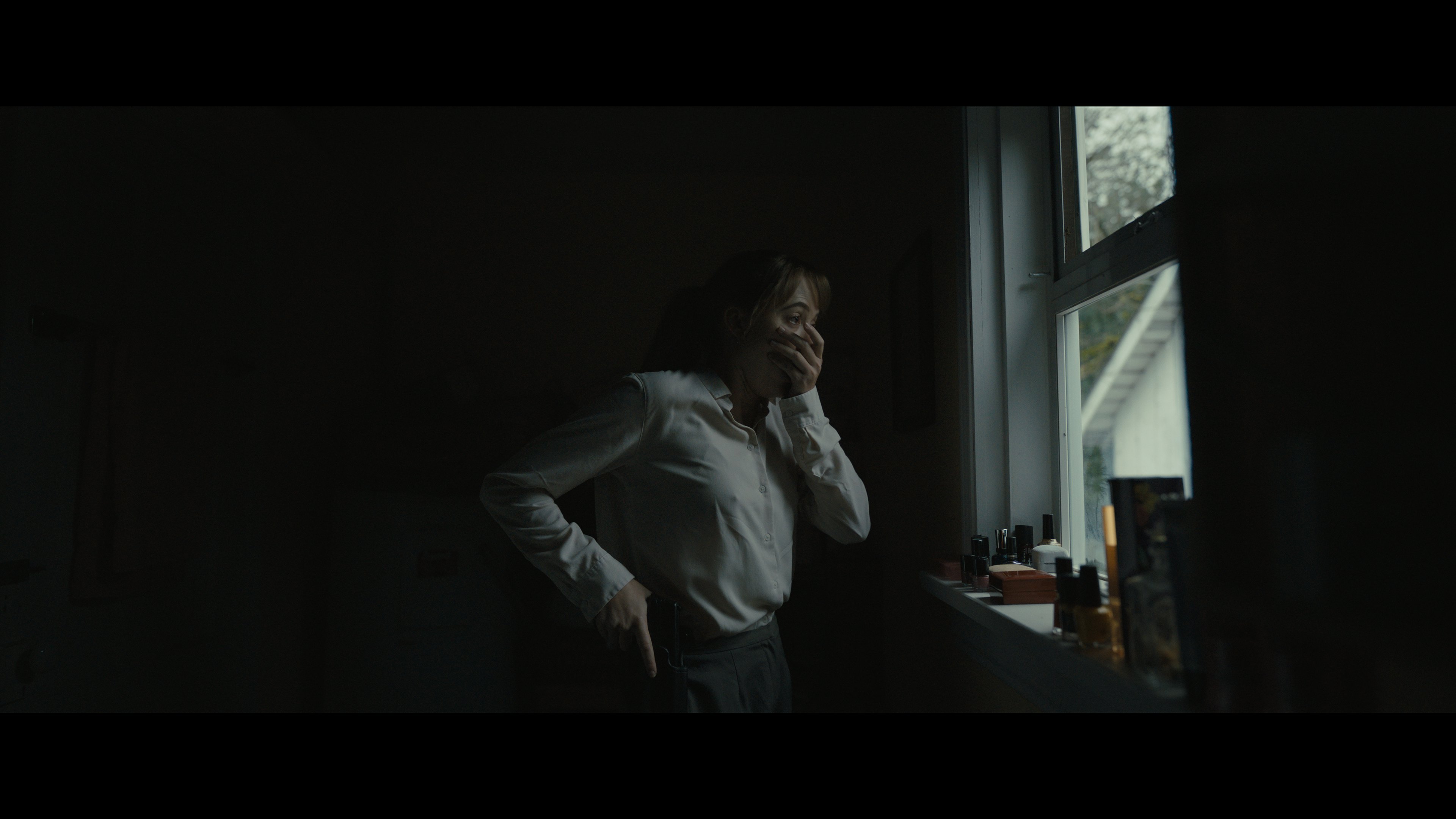
Much of what makes Longlegs so eerie is the uncanny emptiness of its atmosphere. Within its assortment of arcane ciphers and crime-scene photographs, its looming shadows and creaking corridors, Perkins conjures the sense of something evil concealed in the darkness, a presence within all the absence.
“Everything that’s important in life is invisible,” Perkins says. “Love, fear, trust, karma, faith, belief, creativity, inspiration… You can't touch it. You can't hold it. You can't see it. It’s interesting in a movie, where you’re dealing with a visual medium, if you can find an opportunity to shoot the unseen.”
In making Longlegs, that often meant Perkins was instructing Andrés Arochi, his director of photography, to tilt the camera up and leave more space between the top of actors’ heads and the top of the frame, using more headroom to convey the presence of forces swirling outside his characters’ fields of vision.
“That little bit of room up there is for all that is unseen, is on us, or is coming out of us,” he says. “It’s for all that is weighing down on us, emanating out of us, lurking around, waiting to pounce, or trying to leave. If you put that in the frame with your people, it’s just rich.”
“What seems to be missing from a lot of mainstream moviemaking is that the director or the screenwriter has no taste. They’ve got no point of view.”
In the script, as well, Perkins took a “more literary” approach than is conventional in Hollywood screenplays, avoiding scene headings like INT. (interior) and EXT. (exterior) and instead writing down characters’ thoughts, song lyrics, music cues, and memorable images from the scene.
“It reads more novelistically,” Perkins says. “You’re touching on a different part of the creative brain in your collaborators. You’re coming at things slightly sideways.”
In a similar vein, though The Silence of the Lambs and Psycho were inescapable influences, they weren’t the films Perkins found himself discussing with his creative collaborators. Instead, to inform his chilly and desolating vision for the movie’s Oregon backdrop, he instructed Arochi to watch My Own Private Idaho and other films by Gus Van Sant (who, notably, also directed a Psycho remake).
“Those movies felt rich to us,” Perkins says. “They felt sad and lonely and curious. What seems to be missing from a lot of mainstream moviemaking is that the director or the screenwriter has no taste. They’ve got no point of view. They don't like anything. Maybe that's the difference between so-called ‘independent’ and studio films. Point of view is just more present in an independent movie. And, of course, it’s harder to pay for.”
Lee’s connection to Longlegs
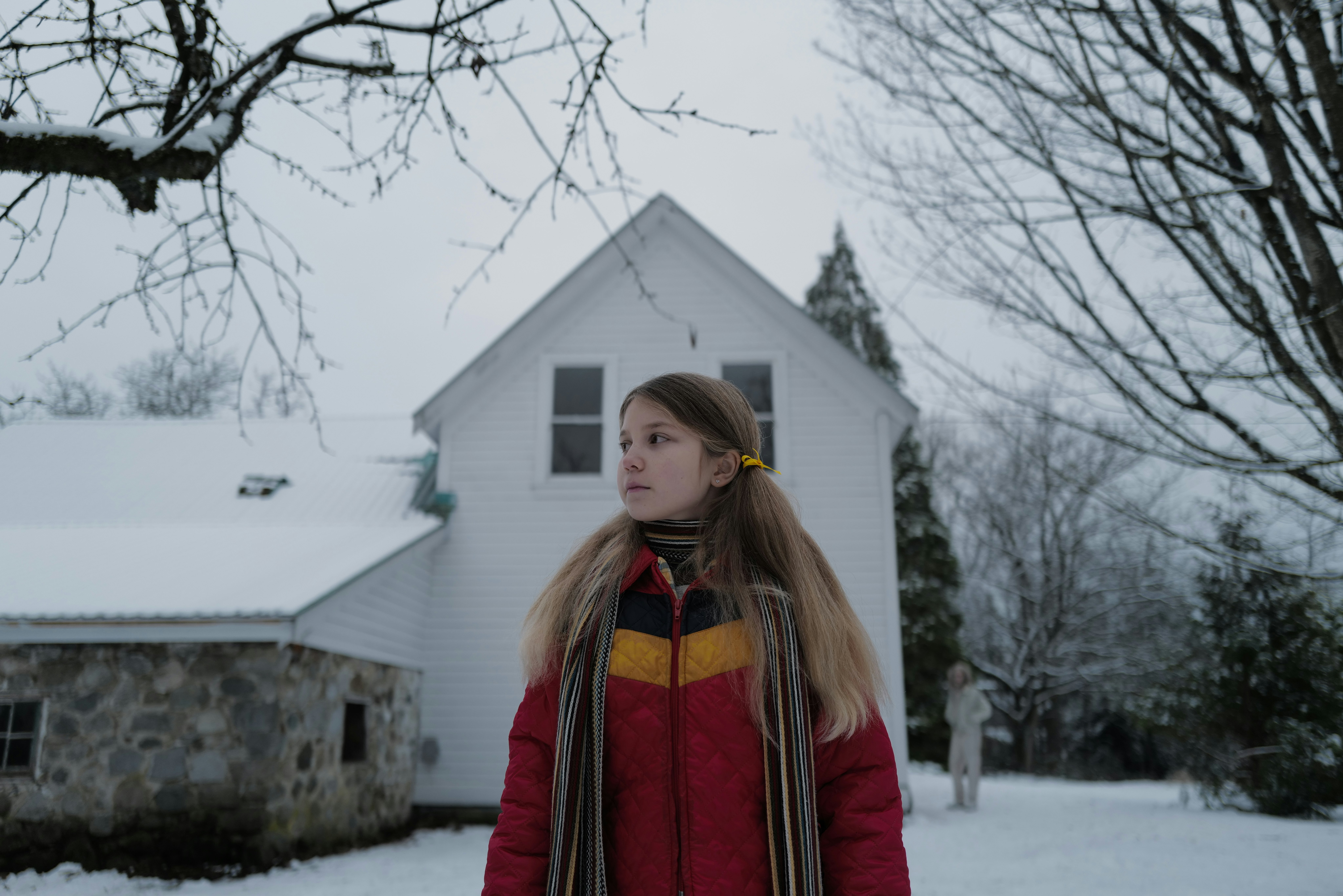
After a 1970s-set prologue in which a young girl encounters a sinister figure who greets her as the “almost birthday girl,” Longlegs picks up with Lee investigating the serial killer and gradually decoding the ciphers left behind at each crime scene.
As Lee’s search continues, she slowly realizes she’s encountered Longlegs before, though she has no memory of this. Her mother is reluctant to say anything about what she might remember of Lee’s 9th birthday, but cryptically suggests Lee look in her old bedroom. It’s there, in a stack of photographs, that Lee finds a clear photograph of Longlegs.
With Lee’s picture in hand, the FBI launches a manhunt for the serial killer, who makes himself alarmingly easy to find, even waiting by a bus stop with two suitcases stuffed with notebooks that feature the same cipher found at the crime scenes.
Perkins admits he indulged his own influences in this sequence.
“Longlegs giving himself up at the bus station is just John Doe giving himself up to Brad Pitt and Morgan Freeman in Se7en,” the director reveals. “‘De-tect-ive!’ It’s just that moment, put into a My Own Private Idaho landscape.”
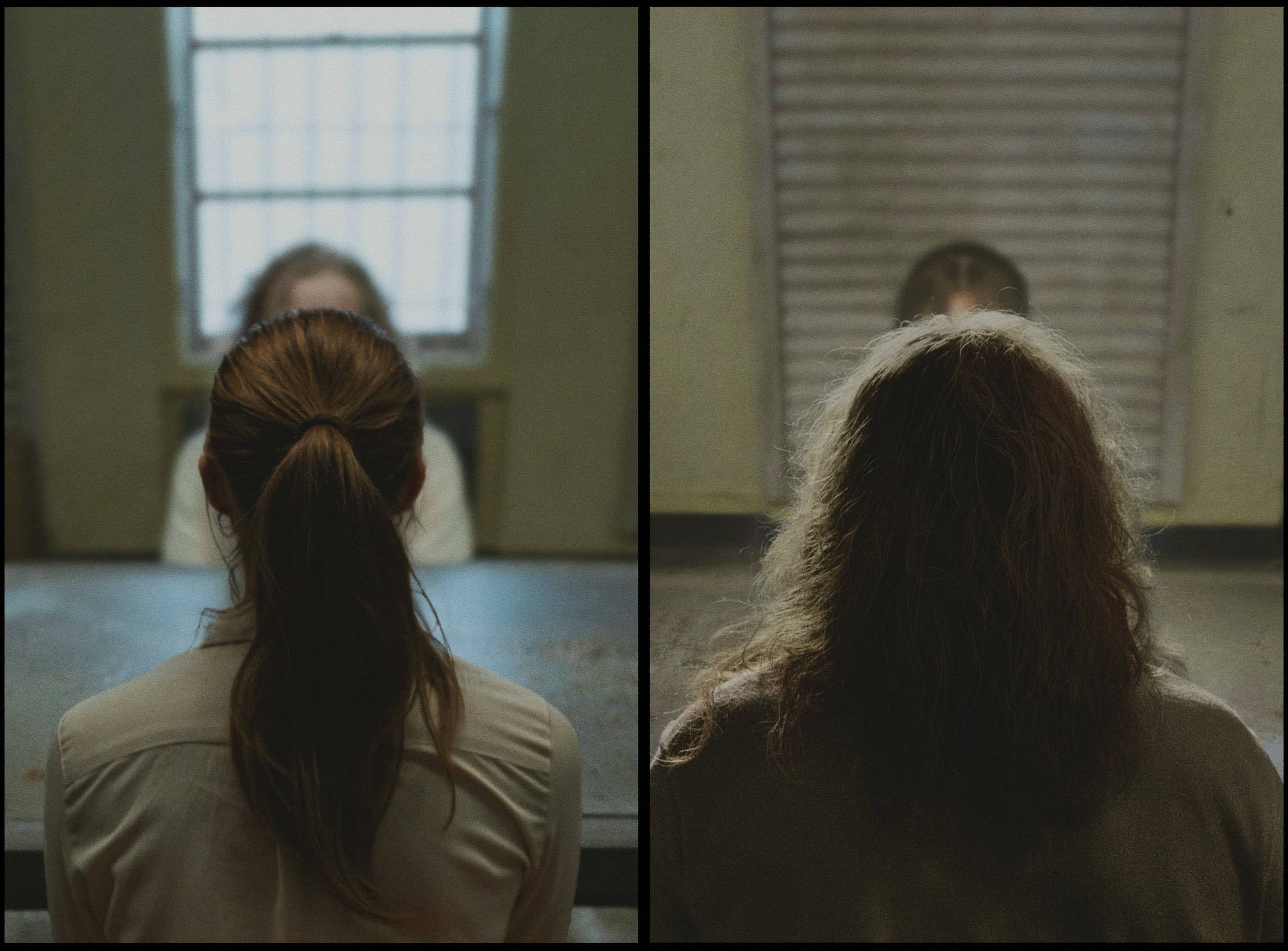
After he’s hauled in for interrogation, Longlegs reveals himself to be obsessed with Lee. Continuing to speak cryptically about birthday girls, he evades questions about the nature of the eerily lifelike dolls he’s been leaving behind at the crime scenes, even as Lee presses him for answers. It’s a momentous sequence and the only one in which Monroe and Cage share the screen, marking the dark culmination of their characters’ suspenseful cat-and-mouse game.
“When you’re writing a script, you’re aware of needing a certain rhythm,” Perkins says. “There's the imperative to engage the audience. A certain rhythm, in movie language, has to spike at certain places.”
Within the rhythms of the genre, few moments are as iconic as those in which the detectives hunting down serial killers finally confront them face to face. Perkins knew, early on in writing the script, that this would be a “hinging moment” for Longlegs, even as he set out to subvert it.
“You find these big pieces, and so the big piece was going to be them meeting for the first time,” Perkins says, noting that it’s actually “the second time that she's met him, at least,” counting the encounter when Lee was a child.
After insinuating Lee’s mother, Ruth, has answers to the questions she’s asking, Longlegs suddenly, violently slams his face against the metal table, smashing in his skull and bleeding out in front of her. As other agents burst in, Lee is left cowering, unable to intervene as the force of Longlegs’ assault leaves him dead.
“You need these impactful moments that people will remember when they walk out of the theater,” Perkins says. “If you don’t have those, you've got nothing.”
What the deal with Longlegs’ demonic dolls?
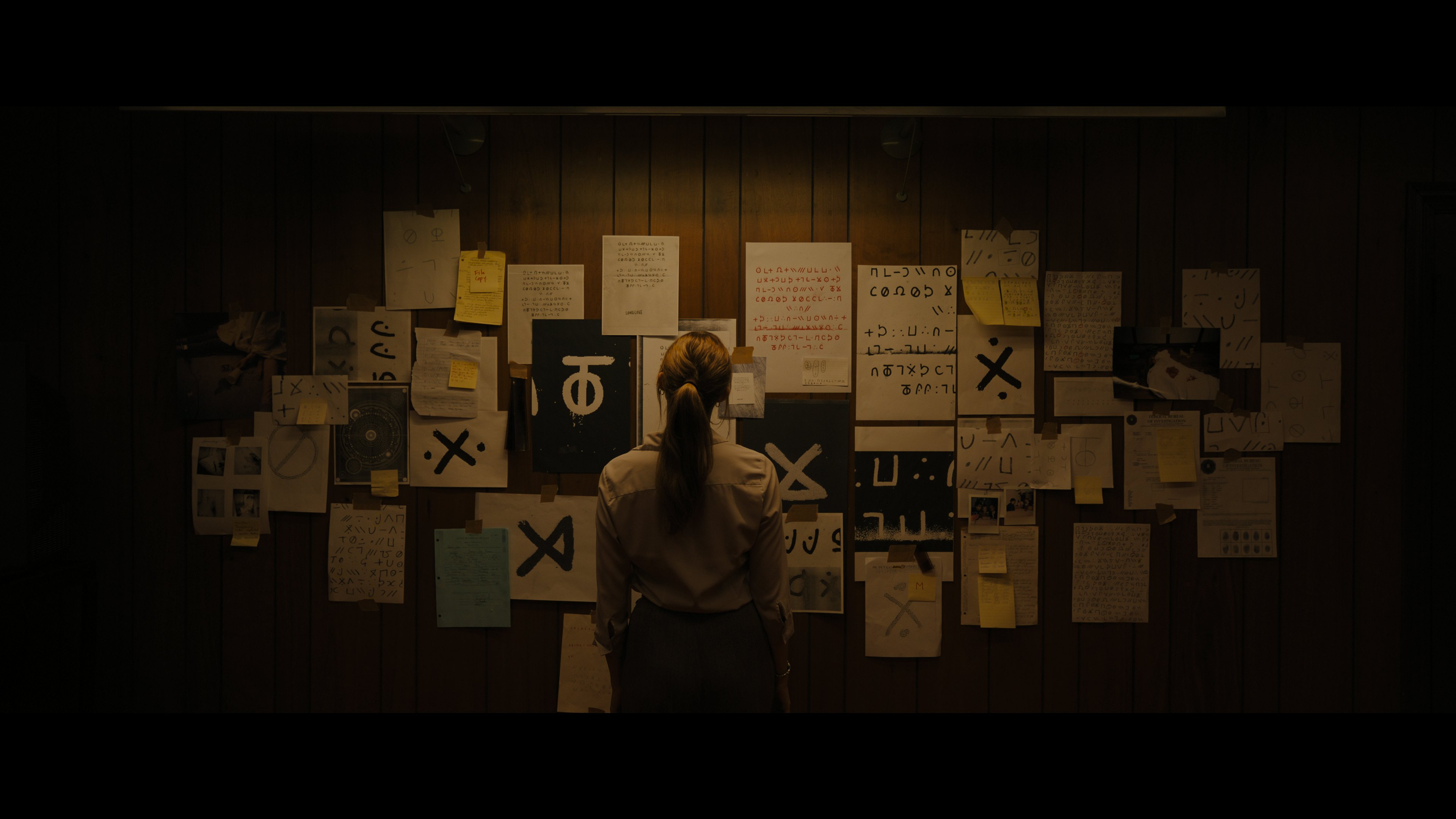
In their investigation, Lee and Agent Carter discover a beautifully made doll concealed in a barn that once belonged to one of Longlegs’ victims. Upon closer examination, a coroner informs them that the doll’s head contained a metal orb, which is hollow but capable of producing a strange sonic frequency.
It’s later revealed that Longlegs is a dollmaker, one who worships the devil and has found a way to invite demonic entities to inhabit each of his handcrafted creations, which closely resemble the daughters of the families he targets. It’s these dolls, that have been smuggled inside the houses of each of his victims, that exert a terrible influence on the families, compelling them to kill.
For Perkins, inspiration for the dolls comes from two unlikely sources. The first is James George Fraser’s The Golden Bough: A Study in Comparative Religion, an encyclopedic volume “about how ancient tribes or cultures dealt with magic, ritual, gods, or belief,” which features chapters on sympathetic magic (the idea that people can be magically affected by actions inflicted on something that represents them).
“With voodoo dolls, if you want to inflict power on someone, you make a doll of them, and you poke it,” he says. “If you want to bring down a regime, you make an effigy of a politician, and you burn it in the streets. Puppets, effigies, sculptures, statues, dolls — that was all in the magic of the world I wanted to create.”
Perkins was also haunted by the murder of JonBenét Ramsey, a 6-year-old beauty queen killed in her family basement.
“The murder took place approaching Christmas, and one present that the parents had gotten for JonBenét was a life-size replica doll of herself, wearing one of her pageant dresses,” he explains. “It was in a cardboard box in the basement, 15 feet from where she was killed, and there was something so insane about that, I’d cataloged it away.”
Longlegs’ ending, explained
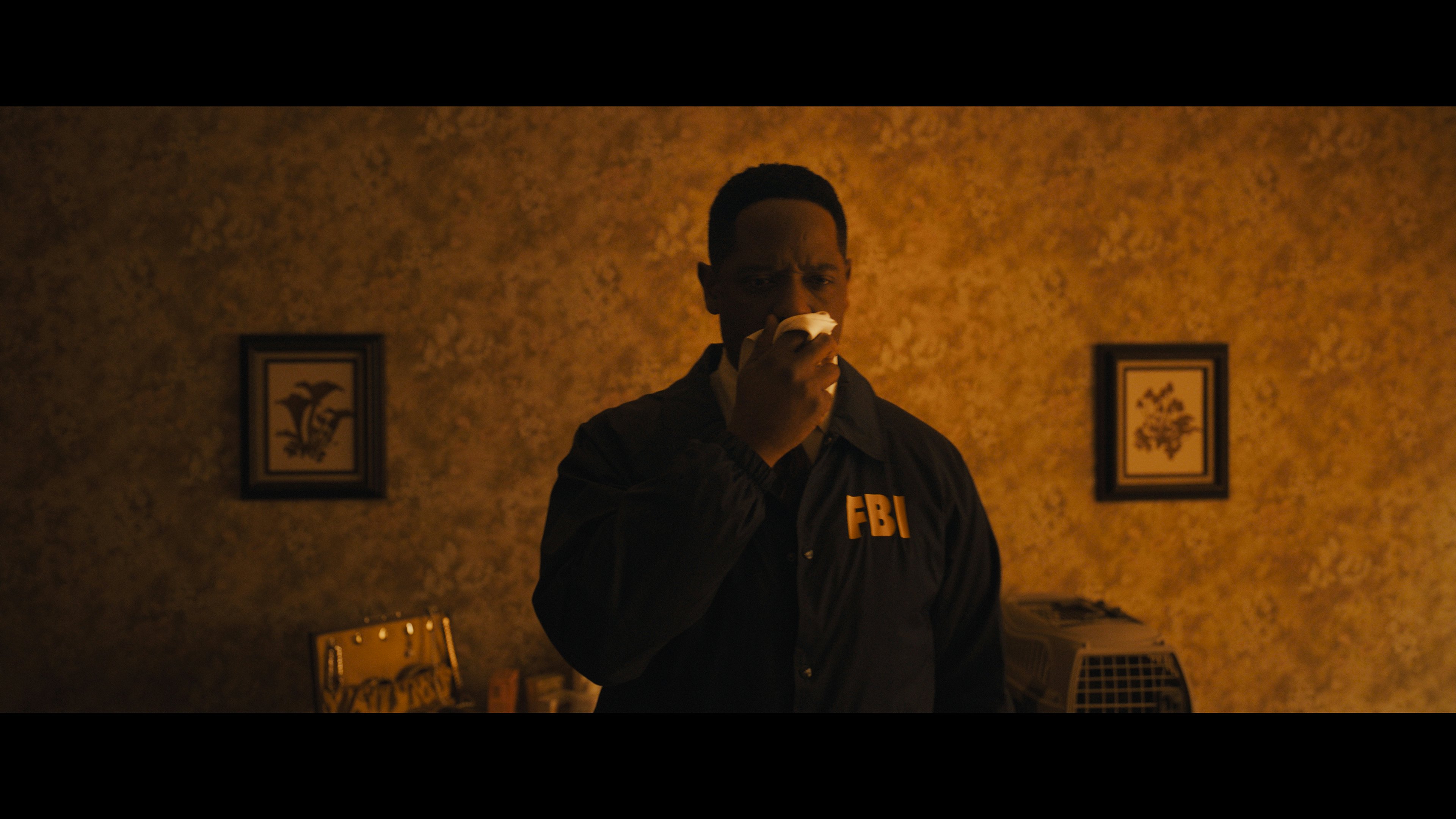
With Longlegs’ death, the case appears closed. Lee returns to her mother’s home to bring her in for questioning, accompanied by Agent Browning (Michelle Choi-Lee). As she searches the house, Lee notices a door to the basement and realizes that she’s discovered Longlegs’ lair where he’d been making his dolls in secret.
It’s too late, however, to save Browning. As Lee rushes back, Ruth sneaks up on the agent and blows her away with a shotgun blast. Now wearing a nun’s habit, Ruth reveals the existence of another doll, made in Lee’s likeness and accounting for why she doesn’t remember Longlegs’ presence in her childhood.
As Ruth recounts, Longlegs came to visit them when Lee was young and offered her mother an ultimatum: to spare Lee’s life, he’d require her to work alongside him, posing as a nun to deliver his dolls to the victims’ families, under the pretense that they’d won prizes in a church contest. Though Ruth destroys the doll that resembles Lee, freeing her from its influence, she intends to continue carrying out Longlegs’ terrible work to protect her own daughter.
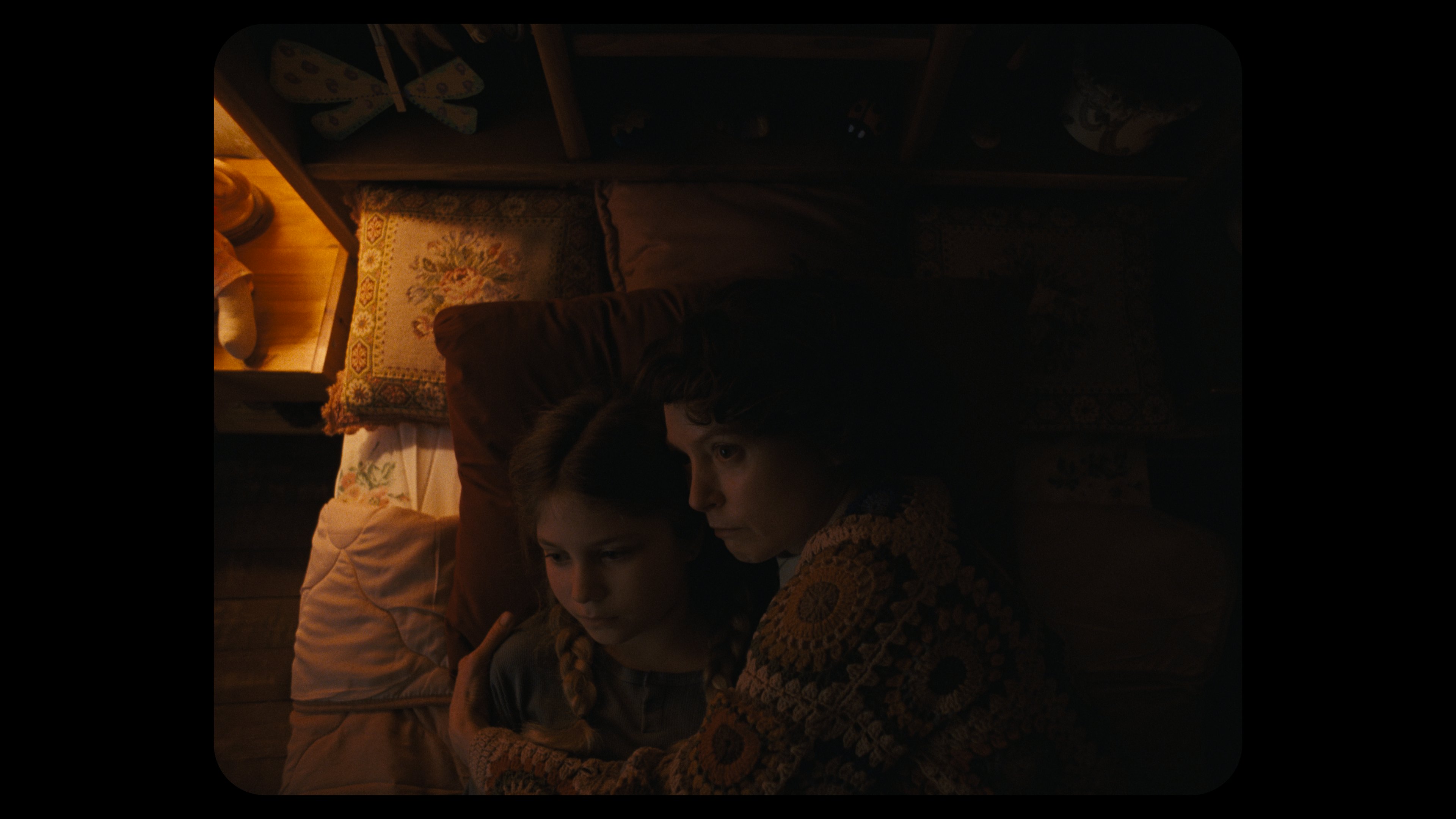
It’s a deal with the devil, literally, but Perkins has a difficult time judging Ruth. In his mind, she’s a mother who, consumed by her desire to protect her daughter, makes the only choice she feels she can.
“We do our best,” Perkins says, smiling. “If anything is true, it's true to say that Ruth Harker is just a parent doing her best. It looks pretty bad. But her heart is in the right place.”
Witt’s performance in Longlegs came “from a really deep, emotional place of wanting to exorcise some things,” Perkins says. “Her parents had recently died, in the last few years, in a tragic way. And her mother, I assume she would be comfortable with me saying this, was mentally imbalanced, and I think that this really affected her.”
“The fact that Republicans could think Democrats worship the devil and eat babies is so fabulous in terms of how fucking stupid that is.”
In her own interviews, Witt has been open about this connection. In 2021, her parents — whom she described as “fiercely stubborn, beautifully original” souls who refused her help later in life — were found dead of suspected cold exposure; the heat had gone out in their Massachusetts home, which had fallen into disrepair and which Witt had not been permitted to enter for over a decade.
“If you’re someone like Alicia, who’s interested in stirring the mulch of [a traumatic loss like] that, turning over the compost and finding that there’s a lot of heat in there, I think some people feel that and want to move it around,” Perkins says. “I think she saw this movie, in the script and the character as written, as an opportunity to be with her mom.”
That was the case for Cage as well. The actor based his performance of Longlegs as an androgynous, high-pitched individual, possessed by forces outside of his control, on his experience of his mother, who suffered from mental illness throughout her life.
“Nick’s been very open about this, how he was playing his mom and bringing her to the front,” Perkins says. “I think that’s just a human impulse to process — if you’re in touch. And Nick and Alicia are very in touch.”
The devil and Oz Perkins
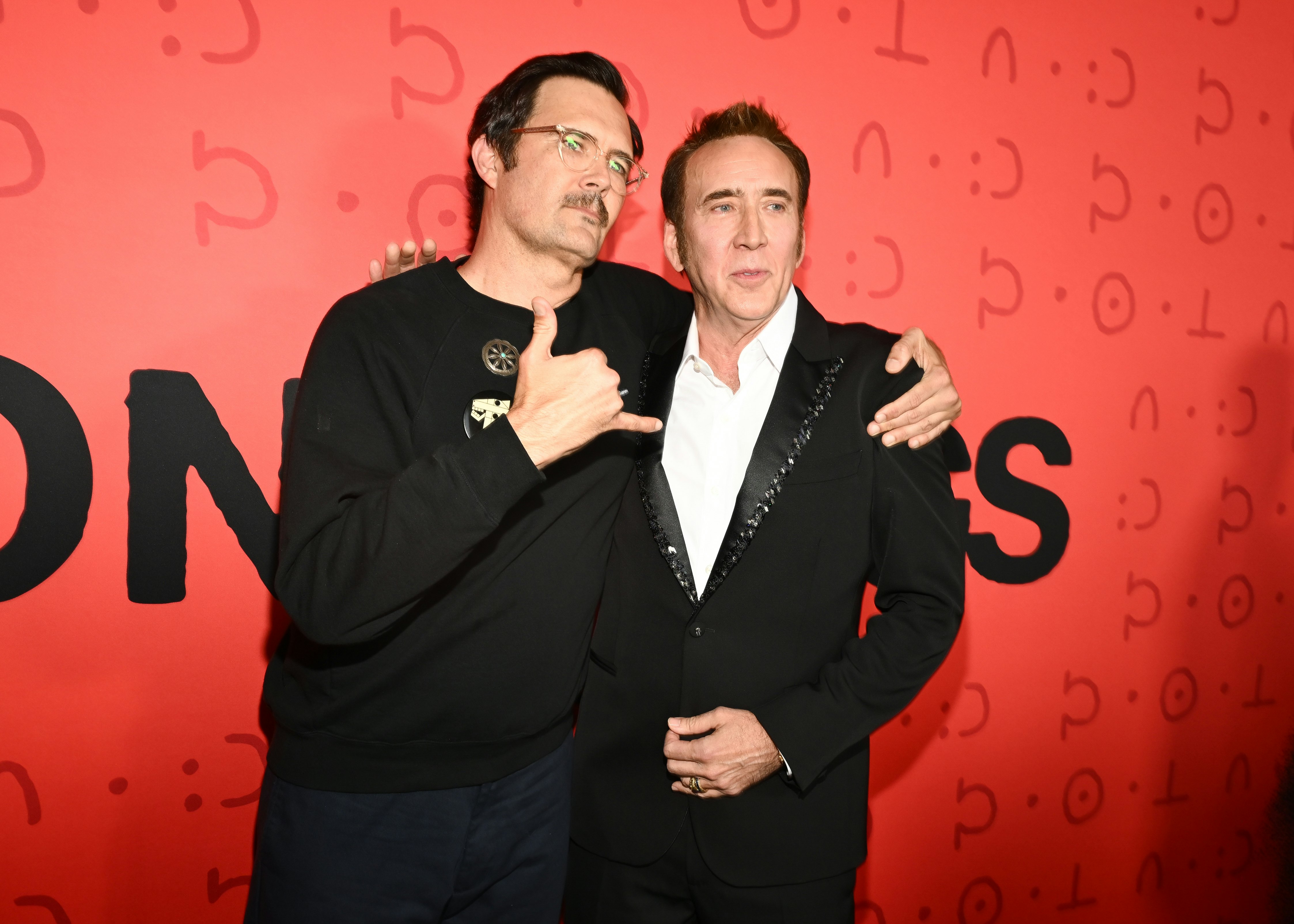
“I’m absolutely areligious,” Perkins insists, reflecting on the continued presence of the devil throughout his filmography. “The devil is delicious, sexy, charming, funny, and smart, and it’s a nice counterpose to the presumed, pristine nature of God. I don't know. It just seems textured and amusing, and sort of funny.”
Rather than drawing on his own beliefs, the devil is a figure that allows Perkins to address the idea that “there's a power out there that’s probably working on you in a bad way,” he says. “If you say ‘the devil,’ it immediately includes every audience member, and it includes every audience member on their terms.” Add to that how the devil has been romanticized and misappropriated throughout the ages, and Perkins finds him irresistible.
“The fact that Republicans could think Democrats worship the devil and eat babies is so fabulous in terms of how fucking stupid that is,” he says as our interview wraps up. “It's much worse what happens in the name of Christianity, in the name of God, than what happens in the name of the devil.”
Adds Perkins: “I don’t know that there have been many crusades that have happened because of the devil. I don’t think many Native people were uprooted from their homes and slaughtered because of the devil. I don't think anybody's saying, ‘Hail, Satan’ when we are colonizing a land. They're saying, ‘Praise Jesus.’”
Longlegs is now playing in theaters.







